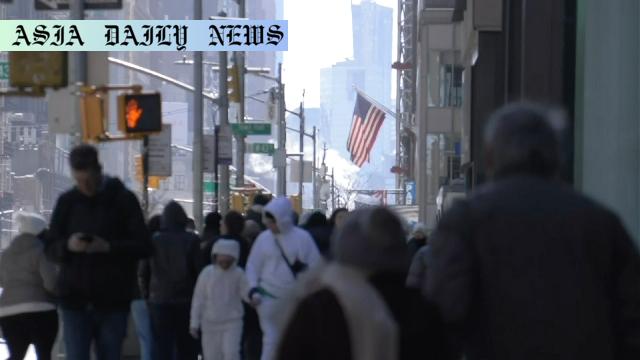US job growth fell slightly short of expectations in February, while the unemployment rate edged up.
US job growth fell short of economists’ February expectations at 151,000 new jobs.
Unemployment rate increased to 4.1%, a slight uptick.
Federal job losses of 10,000 may relate to government workforce cuts.
Inflation signals steady with a 0.3% monthly hourly wage rise.

Employment Figures Reflect Slower Growth
The United States Labor Department has reported that February saw slower-than-expected job growth, with only 151,000 jobs added instead of the projected 160,000. This shortfall comes amid concerns about the state of the U.S. economy and the impact of current government policies. At the same time, the unemployment rate inched up to 4.1%, which reflects increasing fragility in parts of the labor market. While job creation remains positive, these numbers paint a complex picture, as economists closely watch trends in workforce participation and wage growth.
Federal Job Cuts Amid Broader Concerns
A notable concern in February’s data is the decline in federal employment, which decreased by 10,000 positions. Analysts are attributing this reduction to ongoing cuts in the federal workforce prompted by administrative policies under President Donald Trump. These changes highlight the significant role government activity plays in influencing the U.S. job market. While the private sector continues creating roles in various industries, the pressures on public sector opportunities may lead to broader implications for economic stability.
Inflationary Trends and Wage Growth
Despite slower job growth, one positive indicator was the increase in average hourly wages, which grew by 4% year-over-year and 0.3% month-over-month. Wage growth often serves as a barometer of inflationary pressures in the economy. However, with job numbers falling short, rising wages pose questions about sustainability. Economists are cautious about determining whether this reflects genuine improvement in worker wages or potential inflation risks that could cool economic activity further.
Policy Impact and Rising Concerns
The broader picture of jobs and the economy is increasingly tied to government policies. Many analysts suspect that key policy initiatives, such as tariff measures and deregulation, are contributing to uncertainty within hiring trends. Bloomberg’s analysis characterized February’s labor data as a “mixed snapshot” of the U.S. job market as it faces challenges stemming from an evolving policy landscape. These frameworks may spur concerns about economic cooling or potential disruptions in both the private and public job sectors in the months to come.
Commentary
Balancing Job Growth and Government Influence
The February job report presents a sobering but nuanced understanding of the current U.S. economic structure. While job creation continues to move forward, the number of new jobs has fallen short of expectations, raising questions about the factors at play. One standout finding is the drop in federal employment, which should encourage discussions about the long-term effects of shrinking public workforces. Federal positions are not just numbers; they often represent essential services and resources for citizens. The challenge for policymakers is to ensure that their decisions do not inadvertently stifle growth while seeking fiscal policies or efficiency.
The Inflation-Wage Dichotomy
It is heartening to note the growth in average hourly wages, offering workers some respite in an uncertain economy. Yet, this improvement must be scrutinized alongside unemployment and job creation numbers. With limited job growth, wage increases could reflect tightening conditions in labor markets, which might lead to inflationary concerns. Policymakers and economists must tread carefully, ensuring that wage growth translates into tangible benefits for workers without triggering inflation that would reduce purchasing power. Striking a balance here will likely be critical to the broader economic outlook in 2023.
Outlook for the U.S. Economy
Ultimately, this job report reinforces the complexity of the economic landscape. The interplay of government policies, workforce participation, and macroeconomic factors adds layers of unpredictability to projections. The administration’s tariffs and workforce reduction strategies, in particular, seem to have wide-ranging implications that merit further evaluation. Is the U.S. economy poised for sustained growth, or are we on the verge of slower momentum? These are the pressing questions facing economists and policymakers as they analyze February’s data for its broader meanings and implications moving forward.


